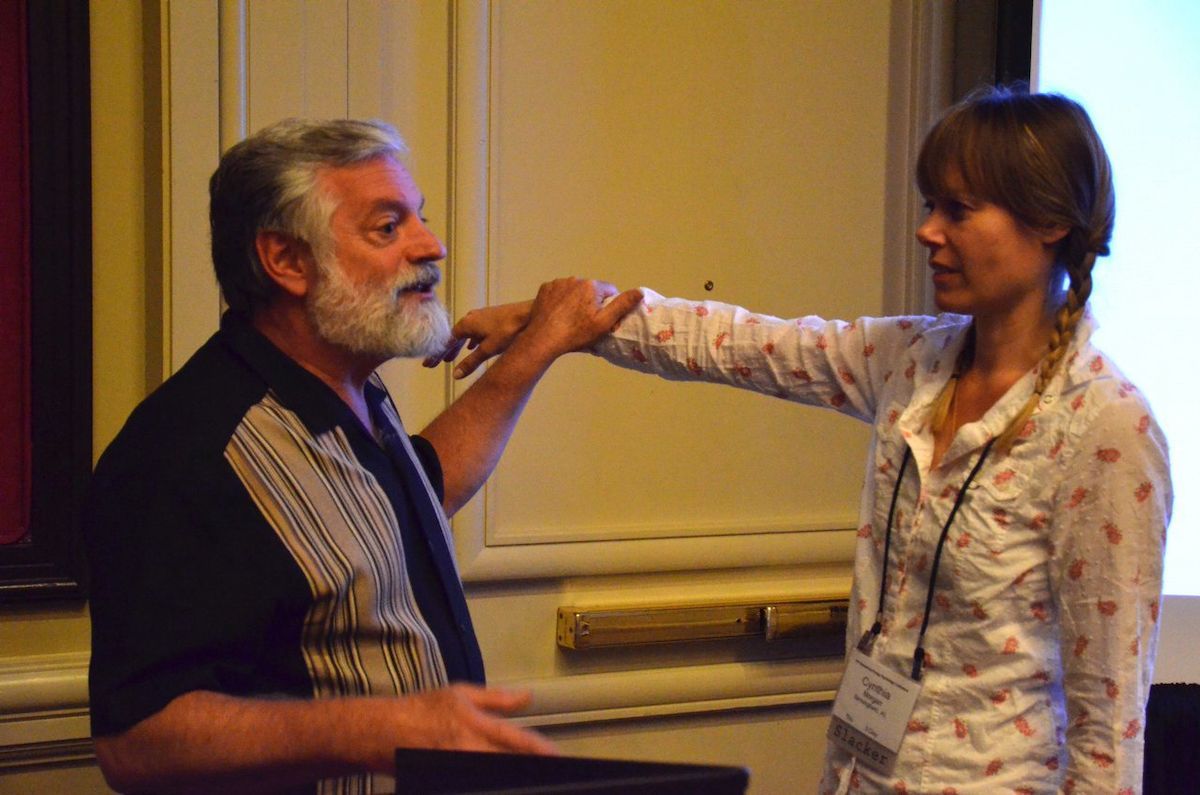Muscle Testing 101: Four Tools to Tune into Your Body’s Wisdom
We know that our body holds a storehouse of wisdom. Wouldn’t it be great to be able to tap into that? Well, it turns out, we can! The field of applied kinesiology, or as it’s more commonly called, muscle testing, gives us access to our bodies’ innate wisdom. Some of these tools are meant to be used on yourself, and others are meant to be used with another person. Each can be mastered with just a little practice. This “muscle testing 101” introduces four techniques that will help you understand your body’s messages.
Some people use these technique to find out whether a certain food or supplement is “good” or “bad” for their bodies. Others ask their body questions, especially when they are having trouble deciding, like “is taking this job for my best and highest good?” At ACEP, we use these techniques in our comprehensive energy psychology program. It allows us to ascertain which problems need to be addressed first, whether our clients have scrambled energy, or which chakras or meridians to stimulate or clear. We don’t recommend using them for fortune telling, but they are great for energy psychology detective work!

The postural sway
This technique is so simple it’s nearly impossible to mess it up. You simply stand up and relax, and ask your body to show you a yes, and then a no. Unless your energy is scrambled, you will tilt slightly forward for a yes, and slightly backward for a no. (Some people swing in a circular motion, usually clockwise for yes and counter-clockwise for no.) At first, the movement may be quite subtle, but it’s definitely there. With practice and confidence, you will find yourself stumbling forward or backwards, getting unmistakable cues from your body! Make sure you do this close to something like a wall you can grab for support if you stumble.
The arm test
This is a partner activity. One person is the subject, and the other is the tester.
1. The subject holds their arm out to the side.
2. The tester places a hand gently on the subject’s shoulder (not everyone does this) and the other hand just above the subject’s wrist.
3. The tester gently applies pressure to the wrist. The arm will hold strong for a yes, and become weak for a no.
An easy way to test this is to ask the person to say “my name is (their name)” and press. Then have them say “my name is (some other name)” and press. The arm will hold strong for the correct name, and grow weak for the wrong name.
You can also test this by having the tester place their other hand, palm down, over the subject’s head, then press the arm. Then turn the tester’s hand palm up over the subject’s head, and press the arm. The arm will hold strong for the palm down and grow weak for the palm up. If that doesn’t happen, have the subject drink some water, relax, and try again. If it is still not working, do one of the brief energy correction or collar bone breathing techniques. You can read about them here.
The finger lock
This is a self-help tool. You make interlocking circles of your index finger and thumb. (I.e., right index finger to right thumb, and looped through, left index finger to left thumb.) Pull your hands away from each other with gentle but firm pressure. This puts pressure on the connection between fingers and thumbs. The pressure will hold, however, with a yes. It will release the lock for a no.
Another finger technique
This is a very subtle technique that you can use without anyone else even knowing what you are doing. Because it is so subtle, it takes a bit more practice to master than the other techniques. You can use it for the same reasons that you use any of these techniques. Again, we recommend sticking to diagnostics rather than fortune telling!
To do this, hold your index finger straight, and slightly bend your middle finger, placing it on the back of the index finger near the nail bed. Use gentle pressure to press your middle finger onto your index finger. Your index finger will stay still and strong for a yes, and drop slightly and grow weak for a no.
Muscle testing 101: Four ways to unlock your body’s innate wisdom
Each of these tools may feel awkward at first, but you will get more comfortable with practice. They should not be used, of course, to make medical diagnoses or to tell a client what to do. However, they can help you move intelligently through the process of determining which meridian points or chakras to treat in an energy psychology session.
If you would like to learn more about muscle testing and how you can use it intelligently in your energy psychology practice, check out ACEP’s comprehensive energy psychology certification course. It's currently being revamped, and will be available again in the future.
Author
Sarah Murphy, LPC, NCC, is a licensed and nationally certified professional counselor. She specializes in energy psychology, including EFT, as well as mindfulness and meditation. In addition to her counseling practice, Sarah is an ACEP Board member and chair of the Communications Committee; she serves as staff therapist with Unite for HER.



